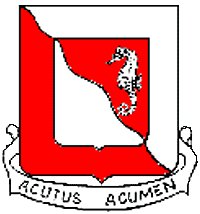|
 Incoming!: With the end of the monsoon
season in January, the 19th Engineer Battalion began to expend major
effort on completing complex construction projects, dodging artillery
illumination rounds and moving from its original cantonment area in Valley A to Long My (ValleyF). Incoming!: With the end of the monsoon
season in January, the 19th Engineer Battalion began to expend major
effort on completing complex construction projects, dodging artillery
illumination rounds and moving from its original cantonment area in Valley A to Long My (ValleyF).
Construction rapidly increased during
the dry season as attached and assigned units changed
a bit, with the 1st Platoon of the 572nd Engineer Company (Light Equipment)
replacing the 2nd Platoon of the 630th Engineers. Meanwhile, Charlie
was looking us over, and we were doing reconnaissance on them and their
Uncle's buddies.
During this period we completed two major
construction projects at Van Canh: a permanent CH-47 Heliport
and the expedient renovation of a 3,600 foot T-17 membrane airstrip.
We also constructed two steel stringer, timber trestle bridges.
During the Van Canh airfield project,
the unit met resistance in ambush by a platoon-sized NVA unit. A violent
firefight, with mortars, gunships, and F-100 air to ground support (via
the Van Canh Special Forces Camp), accounted for four NVA KIA (by body
count). Friendly casualties were two CIDG KIA and one Special Forces
advisor wounded.
Later reconnaissance efforts met with
little or no resistance along QL19 from Qui Nhon to Pleiku
and QL1 from its intersection with QL19 to Bong Son.
New construction commitment for the 19th
resulted in its move to Long My--the Valley A cantonment
area. While we were still located in Valley A, our compound underwent
its most illuminating experience. ROK Tiger Division artillery
was attempting to light up an area near a QM laundry, about a mile away
from the unit. That laundry had fallen victim to a VC sabotage incident--blowing
up the laundry is bad for morale, you know, and probably a safer target
than a frontal assault. Nevertheless, the 19th became the next
victim.
 On the night of 12 April, more than a half ton of illumination canisters
penetrated the perimeter. Twenty-six empty 155mm illumination
rounds, weighing over 50 pounds each, disrupted an unusually quiet night.
Unaware the origin of the artillery was ROK, and considering the possibility
of incoming, the pucker factor took hold sending soldiers
scurrying to-and-fro seeking out damages and injuries. Fortunately,
only four personnel were injured in the foray. Still, the 50 pound 155mm
illumination rounds continued hitting within the camp with such impact
as to penetrate four feet of soil! Some of those rounds went through
corrugated steel roofing, wall lockers and steel filing cabinets, then
actually buried themselves in concrete. We had been on the radios telling
the ROKs to stop the firing. It actually ticked us off to think they
were so stupid as to fire in our direction, since the 19th had
been in Valley A, for two years and was the coordinator of security.
On the night of 12 April, more than a half ton of illumination canisters
penetrated the perimeter. Twenty-six empty 155mm illumination
rounds, weighing over 50 pounds each, disrupted an unusually quiet night.
Unaware the origin of the artillery was ROK, and considering the possibility
of incoming, the pucker factor took hold sending soldiers
scurrying to-and-fro seeking out damages and injuries. Fortunately,
only four personnel were injured in the foray. Still, the 50 pound 155mm
illumination rounds continued hitting within the camp with such impact
as to penetrate four feet of soil! Some of those rounds went through
corrugated steel roofing, wall lockers and steel filing cabinets, then
actually buried themselves in concrete. We had been on the radios telling
the ROKs to stop the firing. It actually ticked us off to think they
were so stupid as to fire in our direction, since the 19th had
been in Valley A, for two years and was the coordinator of security.
As we huddled inside the HQ Co orderly
room and supply room, I remember 1SG (Richard) Lawson saying he'd just
as soon see what was coming in as to be hit from the blind side, so
we headed around the corner to see what we could see. We could
smell the odor of something burning and could hear the tinny
wail of incoming empty canisters that seemed to hit about 60 meters
or so behind the light of the parachutes. We were near the helipad when
one suddenly struck the Pierced Steel Planking, skidding along the PSP
and shooting sparks along the pad. Lawson was right about feeling better
about seeing what was coming in.
S-2 and S-3 (Bn Recon & Operations)
gathered in the Ops office to coordinate reinforcement of part of the
perimeter, assess damage and injuries, estimate potential strength and
location of an opposing force. Leaving the office, I recall hearing
several horrendous explosions and a lot of screaming. We ran back to
the S-3 section to investigate and render aid if possible.
It was obvious that a 155 had come through
the roof and penetrated the concrete floor. The concrete became shrapnel
and Rick Love was writhing in agony and pain, having taken a lot of
shrapnel. We decided that ten guys in one room was a cluster,
so we left two men to help Love and the rest of us dispersed. Love recovered,
but received no Purple Heart because his deep scaring wounds were "friendly
fire."
The move to Valley F went largely
without incident or comment, except for the GI's perennial question:
"Why?" Rumors abounded! It seemed the area was highly desired and other
units coveted our good fortune. One rumor held that the 19th compound
in Valley A was far nicer than that of the 45th Engineer Group
in the heart of Qui Nhon. In fact, the 19th compound had
concrete monsoon storm drains; the 45th compound was as ugly
as sin!
Naturally, the officers met to determine
compound assignment. How we lost the compound is in question, but the
fact that we lost it is not. One rumor was that a weekly coordination
briefing among various commanders contributed to the sudden move. Totally
unsubstantiated rumors that Colonel George Bush, group commander, made
a bad bet in the post-briefing poker game, and lost the compound
to an unnamed commander, who in turn lost it to someone in the (Transportation
chain-of-command. It is, we must be reminded, all rumor.
The rumors continued: The 45th Group
wanted the compound because it would not be convenient for them, so,
they moved the 19th out so the 8th Transportation Company
could take it over. Whatever really happened, we were out, they
were in, and the 19th began it's odyssey to Long My.
Valley F was a flurry of activity
that turned into a full-blown storm. The operational concept was for
the battalion to be centrally located to assigned projects. Company
C started the work in late March, grubbing, clearing adjacent land
amounting to a 30 acre, 2,000 man cantonment area, and other useable
land.
A portion of the site was leveled and
terraced, where necessary, for tent sites. A prefabrication yard was
established to construct tent frames, tent floors, latrines, shower
facilities and mess hall area, all of which would eventually be acquired
and used by Logistical Depot personnel.
Company B came in to remove 74,000
cubic yards of laterite and 24,000 cubic yards of soil in construction
of internal roads, drainage facilities and storage areas. Numerous open
steel sheds went up, with more in the plans. At the same time, the Phu
Tai Ammo Storage Point, four miles southwest of Qui Nhon,
was under continued maintenance and repair. It was the major ammo point
for the Central Highlands.
Attached units, the 544th Float Bridge
Company and a platoon of the 509th Panel Bridge Company,
transported engineer supplies to Bong Son and Tuy Hoa.
Two 7-day assault boat commitments in support of 1st Cav. The
missions were successfully completed and the 509th moved on to
Operation LaJune. Elements of these units then moved by sea and
made amphibious landings near Chu Lai on a mission in support
of Operation Oregon.
We felt complete trust and admiration
for the Officers of the 19th, many of us have survived because
of the decisions made by them, they cared about the welfare of their
men and looked out for us, they were our "Buffer" between the unwise
decisions made by the higher up desk commanders who were only interested
in their careers and not the well being of the men under their command.
The supply channels and even those in
the USA providing the logistical support were all needed. If we did
not have the beans & bullets shipped to us by them, then
how could we function? Every
job was important, no matter how trivial it may seem to someone else!
|

 On the night of 12 April, more than a half ton of illumination canisters
penetrated the perimeter. Twenty-six empty 155mm illumination
rounds, weighing over 50 pounds each, disrupted an unusually quiet night.
Unaware the origin of the artillery was ROK, and considering the possibility
of incoming, the pucker factor took hold sending soldiers
scurrying to-and-fro seeking out damages and injuries. Fortunately,
only four personnel were injured in the foray. Still, the 50 pound 155mm
illumination rounds continued hitting within the camp with such impact
as to penetrate four feet of soil! Some of those rounds went through
corrugated steel roofing, wall lockers and steel filing cabinets, then
actually buried themselves in concrete. We had been on the radios telling
the ROKs to stop the firing. It actually ticked us off to think they
were so stupid as to fire in our direction, since the 19th had
been in Valley A, for two years and was the coordinator of security.
On the night of 12 April, more than a half ton of illumination canisters
penetrated the perimeter. Twenty-six empty 155mm illumination
rounds, weighing over 50 pounds each, disrupted an unusually quiet night.
Unaware the origin of the artillery was ROK, and considering the possibility
of incoming, the pucker factor took hold sending soldiers
scurrying to-and-fro seeking out damages and injuries. Fortunately,
only four personnel were injured in the foray. Still, the 50 pound 155mm
illumination rounds continued hitting within the camp with such impact
as to penetrate four feet of soil! Some of those rounds went through
corrugated steel roofing, wall lockers and steel filing cabinets, then
actually buried themselves in concrete. We had been on the radios telling
the ROKs to stop the firing. It actually ticked us off to think they
were so stupid as to fire in our direction, since the 19th had
been in Valley A, for two years and was the coordinator of security.